Machines & Myths
PROGRAMME
William Tell Overture
Gioachino Rossini (1792-1868)
Machines, Mannequins and Monsters
1. Study for Man and Machine, 1921
2. Articulating Mannequin, 1931
3. Humanly Impossible, 1932
Kelly-Marie Murphy (b. 1964)
INTERMISSION
Symphony No. 15 in A major, Op. 141
1. Allegretto
2. Adagio - Largo - Adagio - Largo
3. Allegretto
4. Adagio - Allegretto - Adagio - Allegretto
Dmitri Shostakovich (1906-1975)
MUSICIANS
Mélanie Léonard, Conductor
VIOLIN 1
Erica Miller
Ellen Allers
Hanna Williamson
Galina Rezaeipour
Alana Gralen
Justin Azerrad
Adam Nelson
Gabi Nowicki
Solange Tremblay
Alison Black
Alireza Tarviji
VIOLIN 2
Sarah Williams
Matthieu Deveau
George Stathopoulos
Micheline Kinsella
Aaron McFarlane
Alla Perevalova
Mariana De La Cruz
Philippe Lafleur
VIOLA
Paul Casey
Emily Kistemaker
Ryan Vis
Benjamin Johnson
Shannon Mardan
Rachel Cho
CELLO
Thaddeus Morden
Jean-Francois Marquis
Olena Gapey
Erin Pickering
Gabriela Ruiz
Natalie Wong
BASS
Paul Mach
Dominic Gauthier
Andrew Roberts
Peter Kilpatrick
Mark Trecarten
FLUTE
Jeffrey Miller
Lara Deutsch
Pascale Margely
OBOE
Susan Butler
Marat Mulyukov
CLARINET
Shauna Barker
Ludovik Lesage-Hinse
BASSOON
Ben Glossop
Orlando Corabian
HORN
Nigel Bell
Jennifer MacDonald
Cresta deGraaff
Éric Gagnon
TRUMPET
Travis Mandel
Alastair Chaplin
TROMBONE
Léonard Pineault-Deault
Nicolas Blanchette
Leonard Ferguson
TUBA
Martin Labrosse
CELESTA
Frédéric Lacroix
TIMPANI
Dominique Moreau
PERCUSSION
Andrew Harris
Nathaniel Mears
Jackson Kelly
Mateen Mehri
Hugo Cayen
Mélanie Léonard
Conductor
-
Born in Montreal, Mélanie Léonard is the music director of Symphony New Brunswick and Assistant professor of instrumental conducting at McGill University’s Schulich School of Music, where she also conducts the McGill Contemporary Music Ensemble. She was resident and associate conductor of the Calgary Philharmonic Orchestra and Music Director of the Sudbury Symphony Orchestra.
As a guest conductor, she worked with many prestigious institutions including the Montreal Symphony Orchestra, the Toronto Symphony Orchestra, Les Violons du Roy, Orchestre Metropolitan, the National Arts Center Orchestra and Orquestra Sinfônica Municipal de São Paulo in Brazil.
Ms. Léonard conducted orchestras on soundtracks for Aura (Montreal Notre-Dame Basilica, Paradise City (South Korea) and for Cirque du Soleil’s Land of Fantasy (Hangzhou, China).
Over the course of her career, she founded three music organizations dedicated to contemporary music: Prima Ensemble, Wild West New Music Ensemble and the Calgary New Music Festival.
During the 2024-2025 season, Maestra Léonard is returning to the Ottawa Symphony Orchestra and will conduct the première of Songs of the Drowning by Iranian-Canadian composer Roozbeh Tabandeh with Ensemble Paramirabo and Chants Libres.
Ms. Léonard was the first woman to complete a doctorate in orchestra conducting at University of Montreal. In 2012, she received the Canada Art Council’s Jean-Marie Beaudet award for orchestral conducting.
SHHH!! Ensemble
Zac Pulak, percussion & Edana Higham, piano
-
SHHH!!… a powerful utterance designed to draw attention forward… creating space and awareness… opening ears to something important.
Percussionist Zac Pulak and pianist Edana Higham are the SHHH!! Ensemble, described as “truly virtuosic and intense” (Confluence Concerts) and “a beautiful discovery” by the Société de musique contemporaine du Québec. Their appetite for collaboration and experimentation has led to bold new works written for them by John Beckwith, Frank Horvat, Jocelyn Morlock, Mari Alice Conrad, Monica Pearce and more.
In February 2023, SHHH!! Ensemble “enthralled” (Winnipeg Free Press) as soloists in the world premiere of Kelly-Marie Murphy’s concerto “Machines, Mannequins, and Monsters” with the Winnipeg Symphony Orchestra. Other world premieres include JUNO-winning composer Jocelyn Morlock’s Spirit Gradient with the Tuckamore Festival in Newfoundland, and Noora Nakhei’s “Echoes of the Past” for the Ottawa International Literary Festival. Across the country, their performances at the Open Ears Festival, LUMINA, the Tuckamore Festival, Ottawa Chamberfest, the Banff Centre, and for the National Arts Centre captivate audiences and critics with their “avant-accessible” approach, calling them “inspiring” and “inventive”.
SHHH!! Ensemble’s debut album Meanwhile (Analekta), nominated for Classical Recording of the Year at the 2023 East Coast Music Awards, was released in October 2022 to critical acclaim, reaching top positions on Apple Music and Spotify playlists. In the fall of 2023 they will release their 2nd CD, a large-scale commission by Toronto composer Frank Horvat on the Leaf Music label, titled “An Auditory Survey of the Last Days of the Holocene.”
PROGRAMME NOTES
-
It is often said that Rossini’s William Tell Overture is the most famous overture in the repertoire, instantly recognizable to audiences around the world. Hector Berlioz, who wrote extensively about it, described the work as “a symphony in four very distinct parts, instead of the piece in two movements with which composers are ordinarily satisfied.” What gives this overture such lasting power?
Rossini composed it in 1829 as the introduction to his final opera, William Tell, premiered in Paris that year. Working under pressure, he drew on ideas from some of his earlier works, including Elisabetta, regina d’Inghilterra (Elizabeth, Queen of England). In fact, Rossini often recycled his own music—“Una voce poco fa,” the celebrated aria from The Barber of Seville, also has its roots in Elizabeth.
The overture unfolds in four contrasting sections, each vividly characterized:
Dawn – Five solo cellos, supported by double basses, open with a tranquil evocation of daybreak over the Swiss Alps. A solo cello line passes between instruments, while distant timpani hint at turbulence ahead. Berlioz praised this passage as “a poetic opening” that captures “the calm of a profound solitude.”
Storm – The serenity is suddenly broken as the full orchestra erupts with driving strings, winds, brass, and percussion. Rossini’s orchestral writing conjures lightning flashes and thunderclaps before the storm subsides into a single flute line.
Ranz des vaches (Call to the Cows) – This pastoral interlude features the cor anglais in a gentle shepherd’s song, accompanied by flute figures above and the soft chiming of the triangle, evoking the bells of grazing cattle. Widely quoted in popular culture to suggest morning or daybreak, this melody serves as a leitmotif throughout the opera.
Galop (March of the Swiss Soldiers) – The overture concludes with the famous galloping finale, depicting the Swiss people’s victorious uprising. Its driving rhythms have become synonymous with horse-riding scenes and heroic pursuits, immortalized as the theme of The Lone Ranger. Berlioz, while critical of its “outworn rhythm” and “abuse of the bass drum,” nevertheless admitted it was “treated with incontestable superiority” and performed with irresistible energy.
Beyond its operatic setting, the William Tell Overture has has enjoyed a remarkable life of its own. Franz Liszt transcribed it for piano in 1838 and performed it frequently in recital. More than a century later, Dmitri Shostakovich quoted its galop in his Symphony No. 15. And in popular culture, its themes have surfaced everywhere from Disney animations to Stanley Kubrick’s A Clockwork Orange.
Notes adapted from the Irish National Opera, and the LA Phil by Mathieu Roy.
-
Machines, Mannequins, and Monsters is a double concerto for piano and percussion, written for Edana Higham and Zac Pulak. The work unfolds in three continuous movements (attacca). Its title was inspired by an exhibition at the Museum of Modern Art (MoMA) in New York, which explored how artists of the early 20th century responded to rapid technological change through images of machines, mannequins, and monsters—motifs that suggest both the real and the surreal, the hopeful and the ominous. You can visit the online exhibit here.
The opening movement begins quietly, balancing low rumbles with shimmering metallic sounds. It gradually explores a spectrum of colours and gestures before building into a mechanical, clock-like section where fragments of melody overlap and collide.
The second movement functions as a cadenza for the soloists. Here, the sound world turns eerie and unsettling, as the percussionist is asked to create sounds and draw resonance from inside the piano itself.
The final movement bursts forth with speed, rhythm, and power. Its energy drives relentlessly forward until it finally dissipates, ending quietly yet unsettled.
-
In some ways, the Fifteenth is the most neo-classical of all Shostakovich’s symphonies. It is, at least in certain moments, his tribute to the world of Haydn, Mozart and Beethoven. It is scored for a modest-sized orchestra and consists of four movements which follow, more precisely and yet more whimsically than any other of his symphonies, the ancient outlines: a gossamer and comical first movement, playing in an almost childlike way with the signposts of sonata form; a sombre slow movement; a dancing and elusive scherzo; and, after a mysterious introduction, a last movement miraculous in its fluidity and its unearthly sense of bright light playing on a surface beneath which lurk great depths of darkness.
The Fifteenth was undoubtedly intended as a summing-up, a survey by a sick and slowly dying man of a lifetime of musical experience. It also shows his vast knowledge of the medium and the history of the form. And it is packed with references to most of his own earlier symphonies, almost as though at this critical point he were looking back at himself, both as hero (the brilliant and fearless youngster who gave birth to the astonishing First Symphony, the heroic master of the Fourth and Fifth) and as anti-hero (the many disappointments, terrors and frustrations).
More surprisingly it contains, in a manner blatant and unnervingly provocative, a bizarre sequence of the most surprising quotations found anywhere in his output. In the first movement of the Fifteenth, without warning, the brass section of the orchestra lurches sideways into an absurd firemen’s-band version of Rossini’s ‘William Tell’ Overture. By contrast, the last movement opens with two extremely loaded quotations from an entirely unexpected source: Wagner. Nothing in Shostakovich’s earlier music had prepared listeners for this sudden interest in the Master of Bayreuth. The first reference is to the moment in ‘Die Walküre’ when Brünnhilde appears to the fleeing Siegmund. She has been sent to tell the unhappy warrior that he must die. This haunting chain of suspensions interrupted by menacing beatings of the kettle-drum is then folded by Shostakovich into a quite different Wagnerian quotation, the famous opening notes of ‘Tristan und Isolde’. And then, more bizarrely still, the ‘Tristan’ quotation itself blossoms into a garbled version of a beautiful song by Glinka, setting words by one of the greatest poets of early Russian romanticism, Yevgeny Baratynsky:Do not tempt me needlessly
By returning to your former tenderness.
To a disillusioned man
All the old seductions are alien.
It is clear that Shostakovich intends every move he makes in this symphony to be loaded with specific significance.
Note by Gerard McBurney courtesy of Boosey & Hawkes
SPONSORS
Thank you to our partners & sponsors for making this event possible.
Administration
STAFF
Mathieu Roy, Orchestra Administrator
Vicente García, Personnel & Production Manager
Jacqueline Lee, Stage Manager
Michael Goodes, Front of House Technician
BOARD OF DIRECTORS
Bernie Etzinger, President & Chair
Tayler Farrellt, Corporate Secretary
Ada Kwok, Treasurer
Venassa Baptiste, Assistant Treasurer
Alexis Nickson, Director
Fiona Charlton, Director
Lara Deutsch, Musicians' Representative (Ex-Officio)
Jean-François Marquis, Musicians' Representative (Ex-Officio)
Ottawa Symphony Orchestra
(613) 231-7802 | info@ottawasymphony.com
Charity Registration #119071876RR0001
Do you like what you hear? Do you want to help support the arts in your community?
Donate to the Ottawa Symphony today to help support our programs. The cost of producing orchestral music is far greater than we could ever hope to make through ticket revenue. The OSO relies on funding from the government, foundations, and individual donors like you











